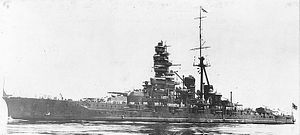We sometimes think of World War I as the last great “European” war. Although fought across several continents, the decisive actions happened on the borders of Central Europe, and the great European empires were the most important actors. Commemorations of the war have thus far focused tightly on the events of June and July in the Balkans.
However, the events of 1914 were watched closely in East Asia, where many believed that the war held the key to the future of the continent. Japan, in particular, saw the war as an opportunity to improve its position at the expense of Germany, which Tokyo quickly appreciated would not be able to defend its Pacific positions. On August 7, 1914, the British government asked for Japan’s assistance with securing Pacific sealanes. On August 23, Japan declared war against Germany, and began operations against German territorial possessions in the Pacific.
Japan quickly seized this opportunity by laying siege to the German Concession at Tsingtao (Qingdao). The primary German forces in the area consisted of a cruiser squadron commanded by Vice Admiral Maximilian von Spee, but when the war began, Spee and his cruisers were touring German island possessions. Seeing the writing on the wall, Spee determined to avoid the Royal Navy and the Imperial Japanese Navy, and started a long set of adventures that would end in the Falkland Islands.
Japan had very narrowly avoided losing one of its prize battlecruisers to British war policy. HIJMS Kongo, the first warship in the world to carry 14” guns, completed fitting out in the United Kingdom in August 1913. Had Kongo been delayed, she almost surely would have been incorporated into the Royal Navy, as was the case with two Turkish and one Chilean battleship. She would immediately have become the most powerful battlecruiser in the Royal Navy, and likely would have seen action at Dogger Bank and Jutland.
Perhaps most importantly, Japan’s declaration of war gave it access to Germany’s island possessions in the Pacific. The Caroline Islands were the most notable of these, and the IJN eventually concentrated its military and administrative resources at Truk. This gave Japan a jumping off point for the conquest of most of the South Pacific in 1941 and 1942.
Thus, in Asia as in Europe, the First World War set the terms under which the Second World War would be fought. WWI cemented the likelihood of further Sino-Japanese conflict by increasing Japan’s territorial interest on the mainland. It also gave Japan a Pacific island empire, from which the IJN could consider and plan for the seizure of further territories.
Last but not least, World War I helped shake the grip of the European empires on their Asian possessions, at least in moral terms. The peace settlement helped create a language through which anti-colonial activists in Asia could speak, and effectively rendered hollow European claims to “enlightened civilization.”

































